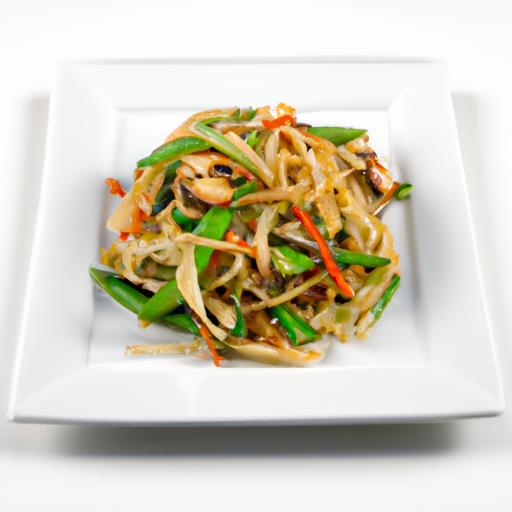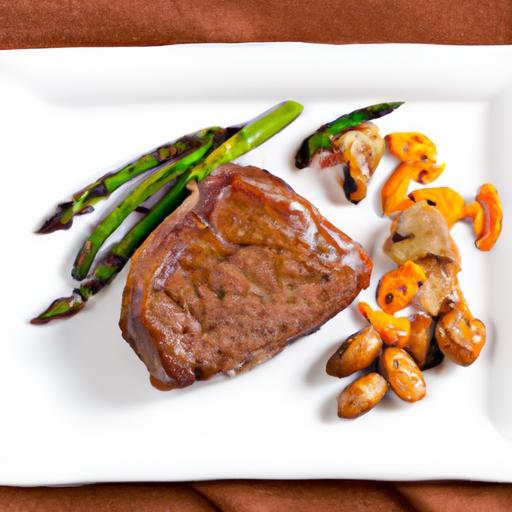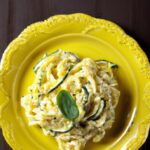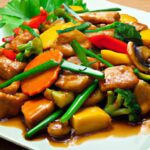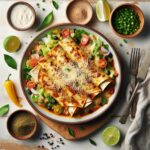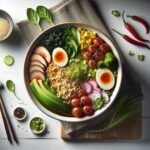In the world of culinary arts, mastering high heat is like harnessing the sun’s own fire-a skill that transforms ordinary ingredients into vibrant, mouthwatering dishes bursting with flavor. But cooking at sizzling temperatures is both an art and a science, demanding respect, precision, and safety. Whether you’re searing a steak to perfection, stir-frying vegetables with snap, or caramelizing sugars into golden brilliance, understanding how to wield intense heat safely will not only speed up your cooking but also elevate your meals to new heights. Join us as we explore essential tips and techniques to tame the flame, ensuring your kitchen adventures are fast, flavorful, and above all, safe.
Mastering High Heat: Safe Tips for Faster, Flavorful Cooking
Mastering high heat is an art form that enhances the vibrant aromas and bold flavors of your favorite dishes, while drastically cutting down cooking time. This technique, when done correctly, transforms everyday ingredients into spectacular meals that burst with smoky, caramelized goodness. Whether you’re searing a thick steak or stir-frying crisp vegetables, understanding the nuances of heat levels and selecting the right cookware can revolutionize your kitchen experience and keep your food from burning or steaming away its flavor. Join me as we delve into practical approaches and inspiring recipes perfect for any cook eager to embrace high-temperature culinary magic.
Prep and Cook Time
- Preparation: 10 minutes
- Cooking: 15 minutes
- Total Time: 25 minutes
Yield
Serves 4 hearty portions
Difficulty Level
Medium – Ideal for cooks comfortable with multitasking at elevated temperatures
Ingredients
- 1 lb (450 g) boneless chicken thighs, trimmed and patted dry
- 2 tbsp avocado oil (high smoke point oil)
- 3 cloves garlic, finely minced
- 1 tbsp freshly grated ginger
- 1 small red chili, thinly sliced (optional)
- 2 tbsp soy sauce (low sodium)
- 1 tbsp honey
- 1 cup broccoli florets, washed and dried
- 1 medium red bell pepper, thinly sliced
- 1 tsp toasted sesame seeds, for garnish
- Fresh cilantro leaves, for finishing
Instructions
- Preheat your wok or cast iron skillet over high heat for 3-4 minutes until it starts to shimmer but not smoke. Using the right cookware like cast iron or carbon steel helps achieve rapid, even heat retention essential for high-temperature cooking.
- Add 1 tbsp of avocado oil and swirl quickly to coat the surface. The high smoke point of avocado oil allows for searing without burnt off-flavors.
- Place chicken thighs in a single layer, pressing lightly to ensure good contact. Sear undisturbed for 3-4 minutes until golden brown, then flip to cook the other side for an additional 3 minutes. Avoid overcrowding the pan to maintain consistent heat.
- Remove chicken from pan and set aside, keeping warm.
- Add the remaining oil to the same pan, then toss in garlic, ginger, and red chili. Stir-fry for 30 seconds until fragrant but not burnt.
- Quickly add broccoli and red bell pepper. Stir-fry for 2-3 minutes, stirring constantly to preserve crispness and prevent uneven charring.
- Return chicken to the pan and drizzle soy sauce and honey evenly over the mixture. Toss rapidly to coat while letting the sauce reduce just enough to cling to ingredients without burning.
- Remove from heat after 1-2 minutes and transfer to serving plates immediately to avoid residual cooking and bitterness.
- Garnish with sesame seeds and fresh cilantro for a burst of flavor and color.
Tips for Success
- Dry your ingredients thoroughly-moisture causes steaming instead of searing, impeding flavorful caramelization.
- Use a thermometer to monitor pan temperature if you’re unsure. The ideal range for high heat cooking is between 400-500°F (204-260°C).
- Be patient: Let the chicken form a crust before moving it to prevent sticking and tearing.
- For a vegetarian twist, swap chicken for firm tofu pressed to remove excess water and follow the same method.
- Always keep a window open or switch on an exhaust fan to manage smoke safely.
- This dish can be prepped ahead; simply toss pre-cut veggies with the sauce and cook fresh for the best results.
Serving Suggestions
Serve this vibrant stir-fry over steamed jasmine rice or quinoa for a wholesome meal. For added texture, sprinkle with crushed peanuts or toasted cashews. A wedge of lime on the side brings a zesty brightness that complements the deep, smoky flavors. Pair it with a refreshing cucumber salad or crisp Asian slaw to balance the rich, high-heat cooked components.
| Nutrient | Per Serving |
|---|---|
| Calories | 320 kcal |
| Protein | 35 g |
| Carbohydrates | 10 g |
| Fat | 15 g |
Explore our guide to caring for your cast iron cookware to prolong the life of your high heat cooking tools. For best safety practices on kitchen ventilation, visit the OSHA website for trusted recommendations.

Q&A
Q&A: Mastering High Heat – Safe Tips for Faster, Flavorful Cooking
Q1: Why cook with high heat in the first place?
A1: High heat is your secret weapon for swift meals packed with flavor. It sears meats to lock in juices, caramelizes veggies for natural sweetness, and speeds up cooking times – perfect for busy days when you want deliciousness without delay.
Q2: Isn’t high heat dangerous or likely to burn my food?
A2: It can be, if handled carelessly. But mastering high heat is all about control and timing. Using the right pan, preheating properly, and watching your food closely helps you avoid burning and instead achieve that irresistible crust or char.
Q3: What type of cookware is best for high-heat cooking?
A3: Opt for heavy-bottomed pans like stainless steel or cast iron, which hold and distribute heat evenly. Non-stick pans typically can’t handle the extreme temperatures and may degrade, so save them for low-to-medium heat tasks.
Q4: How can I prevent smoke from taking over my kitchen?
A4: Good ventilation is key-turn on your range hood or open a window. Use oils with high smoke points like avocado, grapeseed, or refined coconut oil. Also, avoid overcrowding the pan, as too much moisture can create steam and uneven cooking.
Q5: What are some tricks for seasoning when cooking on high heat?
A5: Season boldly but smartly. Salt your protein right before cooking to draw out moisture and create a better sear. Add delicate herbs after cooking to preserve their flavor, and consider finishing with a squeeze of lemon or drizzle of oil to balance the intensity.
Q6: Can I cook vegetables on high heat as well?
A6: Absolutely! High heat roasting or sautéing caramelizes sugars in vegetables, enhancing sweetness and texture. Just cut veggies into uniform sizes, keep an eye on them, and stir or flip frequently to prevent burning.
Q7: How do I ensure my high-heat cooking is safe?
A7: Maintain a clean cooking area free of grease buildup, keep a fire extinguisher nearby, never leave your stove unattended, and always use oven mitts or pot holders. Being alert is the best safety practice.
Q8: Any final tips for mastering high heat?
A8: Practice patience and attention. Let your pan preheat fully, resist the urge to move food constantly, and trust your senses-look for that perfect sizzle and aroma. With experience, high heat becomes your ally for crafting meals that are quick, safe, and bursting with flavor!
In Summary
Mastering the art of high-heat cooking opens a world where speed meets flavor in a perfect dance. By understanding the science and safety behind fiery flames and searing surfaces, you not only protect your kitchen but elevate every dish to bold, mouthwatering heights. So next time you fire up that pan or grill, carry these safe tips with you-because cooking fast doesn’t mean compromising on care or taste. Embrace the heat, respect its power, and watch as your culinary creations transform into vibrant, flavorful masterpieces in record time. Happy cooking!